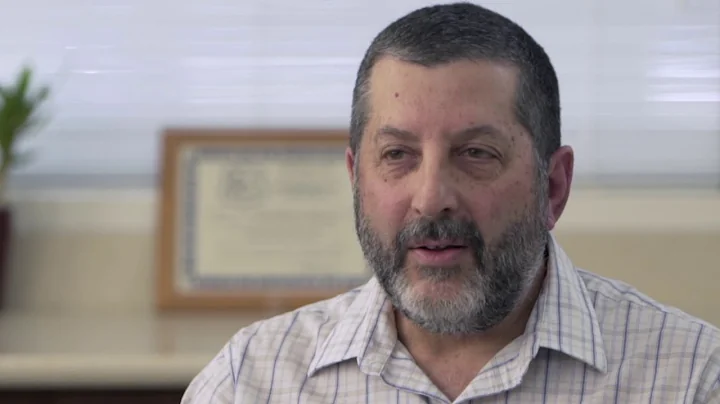Ronald L Roy
age ~54
from Middleboro, MA
- Also known as:
-
- Ron L Roy
- Phone and address:
-
142 Pine St, Middleboro, MA 02346
5089239892
Ronald Roy Phones & Addresses
- 142 Pine St, Middleboro, MA 02346 • 5089239892
- 15 Spruce St, Middleboro, MA 02346 • 5089470465 • 5089479277
- 530 Wareham St, Middleboro, MA 02346 • 5089466272
- Plymouth, MA
Work
-
Company:Aeropostale
-
Position:Store manager
Education
-
School / High School:Johnson and Wales University- Providence, RI1999
-
Specialities:Bachelor's in Hospitality Administration/Management
Resumes

Ronald Roy Pataskala, OH
view sourceWork:
Aeropostale
Store Manager Lindt & Sprungli
Braintree, MA
Jan 2005 to Aug 2009
Store Manager Johnson & Wales Inn
Seekonk, MA
Jan 1999 to Nov 2004
Front Office Manager
Store Manager Lindt & Sprungli
Braintree, MA
Jan 2005 to Aug 2009
Store Manager Johnson & Wales Inn
Seekonk, MA
Jan 1999 to Nov 2004
Front Office Manager
Education:
Johnson and Wales University
Providence, RI
1999 to 2002
Bachelor's in Hospitality Administration/Management North Smithfield High School
North Smithfield, RI
1995 to 1999
Providence, RI
1999 to 2002
Bachelor's in Hospitality Administration/Management North Smithfield High School
North Smithfield, RI
1995 to 1999
License Records
Ronald Thomas Roy
License #:
CPA.0000011189-IA - Active
Category:
Certified Public Accountant
Expiration Date:
Dec 31, 2017
Isbn (Books And Publications)


Name / Title
Company / Classification
Phones & Addresses
President
Westmount Service Station Ltd.
Service Stations - Gasoline & Oil
Service Stations - Gasoline & Oil
395 Mountain Rd., Moncton, NB E1C 2M8
5068531999, 5063827951
5068531999, 5063827951
President
Westmount Service Station Ltd
Service Stations - Gasoline & Oil
Service Stations - Gasoline & Oil
5068531999, 5063827951
Treasurer, Director, Director , Vice President, Vice President
Ring Power Corporation
Whol Construction/Mining Equipment Whol Industrial Equipment Heavy Construction Equipment Rental · Whol Construction/Mining Equipment · Business Services · Passenger Car Rental · Whol Industrial Equipment Equipment Rental/Leasing · Whol Industrial Equipment
Whol Construction/Mining Equipment Whol Industrial Equipment Heavy Construction Equipment Rental · Whol Construction/Mining Equipment · Business Services · Passenger Car Rental · Whol Industrial Equipment Equipment Rental/Leasing · Whol Industrial Equipment
9047377730, 8136713123, 9048249972, 9044485438
Us Patents
-
Mapping And Characterization Of Cavitation Activity
view source -
US Patent:20120041309, Feb 16, 2012
-
Filed:Nov 4, 2009
-
Appl. No.:12/998571
-
Inventors:Constantin C. Coussios - Oxford, GB
Miklos Gyongy - Oxford, GB
Manish Arora - Oxford, GB
Ronald Aurele Roy - Boston MA, US -
Assignee:ISIS INNOVATION LIMITED - Summertown, Oxford
-
International Classification:A61B 8/00
-
US Classification:600437
-
Abstract:Apparatus for locating bubbles in a subject comprises a plurality of pressure wave detectors arranged to operate as passive detectors to generate output signals in response to the receipt of pressure waves generated at a source comprising at least one bubble, and processing means arranged to receive signals from the detectors and to determine from the signals the position of the source.
-
Ultrasound Systems
view source -
US Patent:20120259222, Oct 11, 2012
-
Filed:Sep 20, 2010
-
Appl. No.:13/497470
-
Inventors:Constantin Coussios - Oxford, GB
Manish Arora - Oxford, GB
Natalie Hockham - Oxford, GB
Ronald Aurele Roy - Brighton MA, US -
Assignee:ISIS INNOVATION LIMITED - Summertown, Oxford
-
International Classification:A61N 7/02
A61B 8/08 -
US Classification:600439
-
Abstract:An ultrasound system comprises a transducer, a controller arranged to generate control signals arranged to control the transducer to generate pressure waves directed at a target volume, and sensing means arranged to sense cavitation in the target volume. The controller is arranged to receive sensing signals from the sensing means and to vary the control signals in response to the sensing signals thereby to control the cavitation.
-
Ultrasound Systems
view source -
US Patent:20120271169, Oct 25, 2012
-
Filed:Sep 22, 2010
-
Appl. No.:13/497484
-
Inventors:Constantin Coussios - Oxford, GB
Ronald Aurele Roy - Brighton MA, US
Manish Arora - Oxford, GB
Jamie Collin - Oxford, GB
Gail Ter Haar - Oxford, GB
Sacha D. Nandlall - Oxford, GB
Edward Jackson - Oxford, GB -
Assignee:ISIS INNOVATION LIMITED - Summertown, Oxford
-
International Classification:A61B 8/00
A61B 5/01
A61N 7/02 -
US Classification:600439
-
Abstract:A sensing system for sensing the condition of an object comprises a transducer arranged to generate pressure waves directed at the object and detection means, such as a pressure wave detector, arranged to detect cavitation or other processes in the object. The system further comprises processing means arranged to receive detection signals from the detection means, to process the detection signals to measure a signal parameter of the detection signals that varies with a parameter of the object, and may generate a sensor output that varies in response to changes in the signal parameter.
-
Photonic Band Gap Materials And Method Of Preparation Thereof
view source -
US Patent:56518188, Jul 29, 1997
-
Filed:Jun 27, 1994
-
Appl. No.:8/266146
-
Inventors:Joseph B. Milstein - Brighton MA
Ronald G. Roy - Tewksbury MA -
International Classification:C30R 1700
-
US Classification:117 54
-
Abstract:The invention concerns materials which exhibit photonic band gaps in the near infrared and visible regions of the optical spectrum and methods of preparation of such materials. The materials manufactured according to the invention are particularly suitable for use in the optical analog to semiconductor behavior, in which a photonic band gap material, or a plurality of such materials acting in concert, can be made to interact with and control light wave propagation in a manner analogous to the way that semiconductor materials can be made to interact with and control the flow of electrically charged particles, i. e. , electricity, in both analog and digital applications. According to the invention it is possible to fabricate a photonic band gap material by impregnating the pores or voids contained within the volume of a specially prepared reticulated mesh, which may be made of a material with a high melting temperature such as a metal, with liquid material which melts at a temperature lower than the melting temperature of the reticulated mesh and which solidifies upon cooling. The reticulated mesh is then dissolved by simple chemical action in a liquid bath, leaving behind a solid reticulated structure composed of the solidified liquid material. In particular, the liquid material may be caused to solidify into an ordered solid such as a single crystal by the imposition of either or both a thermal gradient or a seed single crystal of the same or a closely related material.
-
Photonic Band Gap Materials And Method Of Preparation Thereof
view source -
US Patent:53851145, Jan 31, 1995
-
Filed:Dec 4, 1992
-
Appl. No.:7/986848
-
Inventors:Joseph B. Milstein - Brighton MA
Ronald G. Roy - Tewksbury MA -
International Classification:H01L 2120
-
US Classification:117 1
-
Abstract:The invention concerns materials which exhibit photonic band gaps in the near infrared and visible regions of the optical spectrum and methods of preparation of such materials. The materials manufactured according to the invention are particularly suitable for use in the optical analog to semiconductor behavior, in which a photonic band gap material, or a plurality of such materials acting in concert, can be made to interact with and control light wave propagation in a manner analogous to the way that semiconductor materials can be made to interact with and control the flow of electrically charged particles, i. e. , electricity, in both analog and digital applications. According to the invention it is possible to fabricate a photonic band gap material by impregnating the pores or voids contained within the volume of a specially prepared reticulated mesh, which may be made of a material with a high melting temperature such as a metal, with liquid material which melts at a temperature lower than the melting temperature of the reticulated mesh and which solidifies upon cooling. The reticulated mesh is then dissolved by simple chemical action in a liquid bath, leaving behind a solid reticulated structure composed of the solidified liquid material. In particular, the liquid material may be caused to solidify into an ordered solid such as a single crystal by the imposition of either or both a thermal gradient or a seed single crystal of the same or a closely related material.
-
Photonic Band Gap Materials And Method Of Preparation Thereof
view source -
US Patent:56883188, Nov 18, 1997
-
Filed:Jun 6, 1995
-
Appl. No.:8/468971
-
Inventors:Joseph B. Milstein - Brighton MA
Ronald G. Roy - Tewksbury MA -
International Classification:C30B 3306
-
US Classification:117 1
-
Abstract:The invention concerns materials which exhibit photonic band gaps in the near infrared and visible regions of the optical spectrum and methods of preparation of such materials.
-
Method Of Use Of Thermophotovoltaic Emitter Materials
view source -
US Patent:56016611, Feb 11, 1997
-
Filed:Jul 21, 1995
-
Appl. No.:8/505402
-
Inventors:Joseph B. Milstein - Brighton MA
Ronald G. Roy - Tewksbury MA -
International Classification:H01L 31058
-
US Classification:136253
-
Abstract:The invention concerns the use of materials which exhibit photonic band gaps in the near infrared and visible regions of the optical spectrum as thermophotovoltaic emitter materials. The materials used according to the invention are particularly suitable for use in the conversion of thermal or heat energy into optical or light energy. U. S. Pat. No. 5,385,114, PHOTONIC BAND GAP MATERIALS AND METHOD OF PREPARATION THEREOF, was issued on Jan. 31, 1995 to the present inventors for a class of material which can be employed according to the present invention. According to the invention it is possible to employ these materials in the conversion of thermal energy to optical energy, in particular as a thermophotovoltaic emitter material, when the thermal energy is supplied by sources such as flames, sunlight or other broadband electromagnetic sources, or hot gases or fluids. By its nature, as disclosed in the earlier filings, the material emits optical or light energy in one or more narrow bands, which may be received by a sensor such as a photovoltaic cell that converts optical or light energy into electricity. In particular, certain significant benefits are obtained by use of the instant technology.
-
Mapping And Characterization Of Cavitation Activity
view source -
US Patent:20160089109, Mar 31, 2016
-
Filed:Dec 10, 2015
-
Appl. No.:14/964895
-
Inventors:- Summertown, GB
Miklos Gyongy - Oxford, GB
Manish Arora - Oxford, GB
Ronald Aurele Roy - Boston MA, US -
International Classification:A61B 8/08
A61N 7/00 -
Abstract:Apparatus for locating bubbles in a subject comprises a plurality of pressure wave detectors arranged to operate as passive detectors to generate output signals in response to the receipt of pressure waves generated at a source comprising at least one bubble, and processing means arranged to receive signals from the detectors and to determine from the signals the position of the source.
Plaxo

Ronald Roy Smith
view sourceFrohstockheim, GermanyUSAG Schweinfurt Germany

Roy Ronald Ultee
view sourceNetherlandsMulti talented
[email protected]

Ronald Roy
view sourceTranscontinental
Classmates

Ronald Roy
view sourceSchools:
Brockett Elementary School Tucker GA 1964-1969
Community:
Reid Renner

Ronald Roy
view sourceSchools:
Abbeville High School Abbeville MS 1942-1955

Ronald Roy
view sourceSchools:
Washburn High School Washburn WI 1958-1962
Community:
Karen Larson, Gene Roy, Judainne Johnston

Ronald Roy
view sourceSchools:
Narragansett Regional High School Baldwinville MA 1954-1958
Community:
Prime Robichaud, Larry French, Sherrie O'donnell

Ronald Roy
view sourceSchools:
Our Lady of Perpetual Help School Holyoke MA 1947-1951
Community:
Steve Dalkas, Johanna Collazo, Robert Laflam, Myrna Sanchez

Ronald Roy
view sourceSchools:
Lake Charles - Boston High School Lake Charles LA 1981-1985

Ronald Roy
view sourceSchools:
Penney High School East Hartford CT 1969-1973

Ronald Roy
view sourceSchools:
Stephens High School Rumford ME 1960-1964
Community:
Susan Bulger, Maureen Mcquade, William Patrick, Linda Sassi, Frank Diconzo
Youtube
Myspace
Googleplus
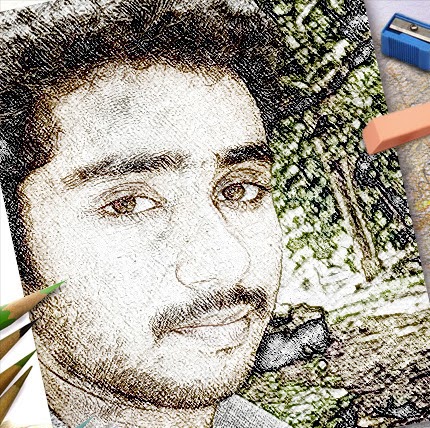
Ronald Roy
Education:
UIT - B.Com, St. Joseph's E.H.S.S - School Education

Ronald Roy
Work:
24/7 Customer
Education:
Campion Higher Secondary School, Tiruchi
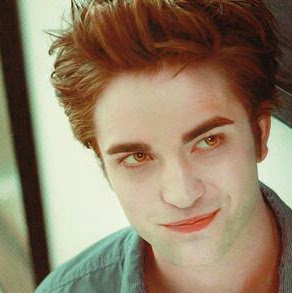
Ronald Roy
Work:
Shine web solutions

Ronald Roy

Ronald Roy
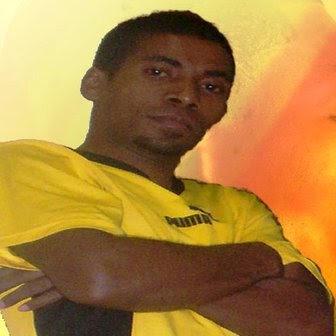
Ronald Roy

Ronald Roy

Ronald Roy

Ronald Allan Roy
view source
Ronald Casue Roy
view source
Ronald G. Roy
view source
Ronald Roy
view source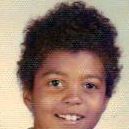
Ronald Roy
view source
Ronald Roy
view source
Ronald Roy
view source
Ronald A Roy
view sourceFlickr
Get Report for Ronald L Roy from Middleboro, MA, age ~54

